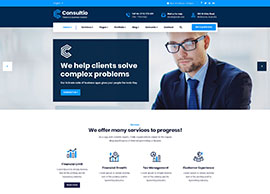Down Syndrome
Down syndrome (also called Trisomy 21) is a genetic disorder that occurs in approximately 1 of 800 live births. It is the leading cause of cognitive impairment. Down syndrome is associated with mild to moderate learning disabilities, developmental delays, characteristic facial features, and low muscle tone in early infancy. Many individuals with Down syndrome also have heart defects, leukemia, early-onset Alzheimer’s disease, gastro-intestinal problems, and other health issues. The symptoms of Down syndrome range from mild to severe. Life expectancy for individuals with Down syndrome has dramatically increased over the past few decades as medical care and social inclusion have improved. A person with Down syndrome in good health will on average live to age 55 or beyond.

About This
Increased Quality of Life with Homeopathy
Being a genetic disease in itself, it is but understandable that Down syndrome can not be “cured” by any system of medicine, until and unless something is done about the culprit genes involved. Though, Homoeopathy, being an individualistic and holistic science, promises some tremendous upliftment in day-to-day lives of the children suffering from Down syndrome. If caught young, these kids can be saved from a lot of miseries and more so, their over all process of mental and physical development can be given a good positive thrust by the sweet Homoeopathic pills. Children with Down syndrome, apart from some congenital malformations, are not only born “ill” in the first place, but that they are in a constant process of development and change during their life. Also, these individuals are ever and always confronted with new developmental impulses during their life, which might lead to conflicts and painful experiences with different reactions (i.e. disease).
With the modesty of homeopathy’s prognostic predication and holistic consideration of the human with body, mind and soul, homeopathy as complementary medicine is also an important support for the amelioration of life quality in patients with Down syndrome.
Very importantly also, Individuals with Down syndrome should be fully included in family and community life. It is very important to stimulate, encourage, and educate children with Down syndrome from infancy. Programs for young children with special needs are offered in many communities. Early intervention programs, including physical therapy, occupational therapy, and speech therapy can be very helpful.
Like all children, children with Down syndrome greatly benefit from being able to learn and explore in a safe and supportive environment. Being included in family, community, and preschool life will help a child with Down syndrome develop to his or her full potential.
In most cases, Down syndrome occurs when there is an extra copy of chromosome 21. This form of Down syndrome is called Trisomy 21. The extra chromosome causes problems with the way the body and brain develop.Down syndrome is the most common single cause of human birth defects.The only well known risk factor for conceiving a child with Down syndrome is advanced maternal age. The older the woman is at conception, the greater the risk of having a child with Down syndrome.Mother's age at conception Risk of Down syndrome
25 years 1 in 1,250
30 years 1 in 1,000
35 years 1 in 400
40 years 1 in 100
45 years 1 in 30
Parents who have conceived a child with Down syndrome have a 1% increased risk of conceiving another child with Down syndrome. If a parent is a carrier of a chromosome 21 translocation, the risk can be as high as 100%.Women with Down syndrome have a 50% risk of conceiving a child with Down syndrome. If the father has Down syndrome, the risk of conceiving a child with Down syndrome is also increased.
- A flattened face and nose, a short neck, a small mouth sometimes with a large, protruding tongue, small ears, upward slanting eyes that may have small skin folds at the inner corner
- White spots (also known as Brushfield spots) may be present on the colored part of the eye (iris)
- The hands are short and broad with short fingers, and with a single crease in the palm
- Poor muscle tone and loose ligaments are also common
- Development and growth is usually delayed and often average height and developmental milestones are not reached.
- The most common condition associated with Down syndrome is cognitive impairment. Cognitive development is often delayed, and all individuals with Down syndrome have mild to severe learning difficulties that last throughout their lives. How the extra chromosome 21 leads to cognitive impairment is not entirely clear. The average brain size of a person with Down syndrome is small and scientists have found alterations in the structure and function of certain brain areas such as the hippocampus and cerebellum.
- About half of all people with Down syndrome are born with a heart defect (called Congenital heart Defects) often with an atrioventricular septal defect. Other common heart defects occurring in Down syndrome include ventricular septal defect, atrial septal defect, tetralogy of Fallot, and patent ductus arteriosus.
- Gastrointestinal conditions
- Conditions especially as Esophageal Atresia, tracheoesophageal fistula, Duodenal Atresia or stenosis, Hirschsprung disease, and imperforate anus. Individuals with Down syndrome are at a higher risk for developing celiac disease.
- Cancer
- Acute lymphoblastic leukemia (a type of blood cancer), myeloid leukemia, and testicular cancer.
- Hearing loss
- Frequent ear infections (otitis media)
- Under active thyroid (hypothyroidism)
- Cervical spine instability
- Visual impairment
- Sleep apnea
- Obesity
- Constipation
- Infantile spasms
- Seizures
- Dementia
- Early-onset Alzheimer's disease.
- About 18% to 38% of individuals with Down syndrome have coexisting psychiatric or behavior conditions, such as:
- Autism spectrum disorders
- Attention deficit hyperactivity disorder (ADHD)
- Depression
- Stereotypical movement disorders
- Obsessive compulsive disorder.
- Health screening
- Speech therapy may be useful
- Augmentative and alternative communication methods, such as pointing, body language, objects, or pictures, are often used to help with communication
Ina case like Down's Syndrome where it is impossible to reverse the genetic defect, the priority of the treating doctor becomes improving the quality of life of the patient. The treatment is usually symptomatic and has shown tremendous results in combination with occupational therapies.
- Chromosomal Analysis
- Complete Haemogram
- ECG, Echocardiogram
- X-rays of the Chest and Gastro-intestinal tract
Not Available










































